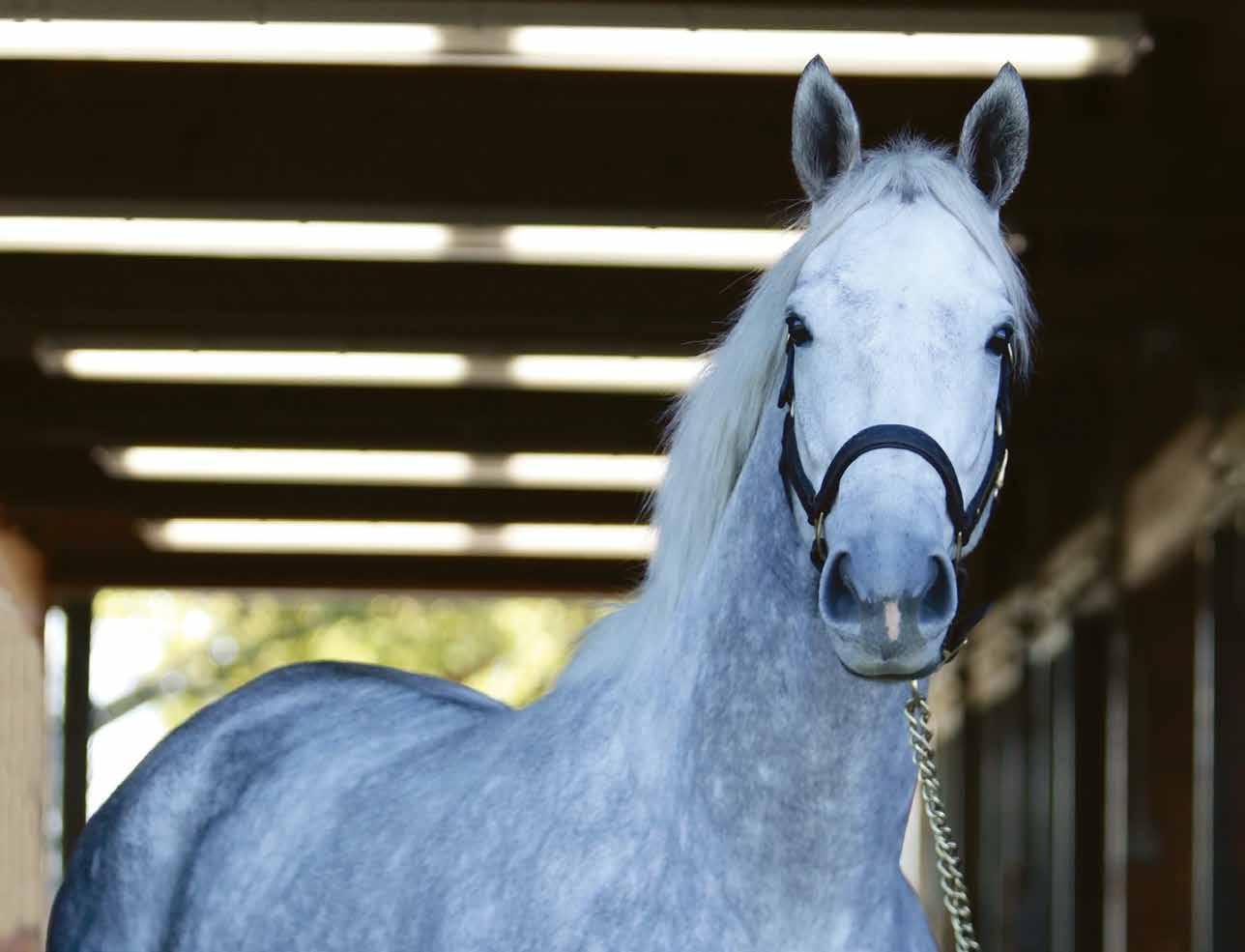
6 minute read
A BUSINESS IS BORN
Carroll went out on her own in 2008 under the banner of CORE Therapies as a sole practitioner with a focus on racetrack medicine, earning her certification in acupuncture that year and the chiropractic equivalent the following year and incorporating both into her practice.
As a sole racetrack practitioner, she was doing everything from lameness workups, scoping, pre-race treatments and chiropractic and acupuncture work to stocking her truck and managing her billing. All of that was in addition to being a new mother and still galloping in the mornings.
Her clients were seeing favorable results from her chiropractic and acupuncture work and were increasingly requesting those services, which made her wonder if focusing on those modalities would allow her not only to support her clients and her daughter, Aurea, more effectively but also to better serve the horses under her care.
“I made the decision to focus exclusively on chiropractic and acupuncture; then the economy crashed,” Carroll said. “I thought it was going to be the end of my career. Instead, as other practitioners were losing business, I was gaining business. For less than it costs to inject a single joint, I could work on the entire body. It became a cost-saver in some people’s eyes, and as medication rules and other rules have become more restrictive more recently, I’ve seen a real change in many people’s mindsets.”
Carroll’s client base has since expanded beyond the racetrack to include sale yearlings, weanlings, foals and sport horses. Her practice also has expanded beyond chiropractic and acupuncture to include pulsed electromagnetic field therapy (PEMF) and Class IV laser therapy, and she’s added several staff members to assist with treatments and recordkeeping.
“So often, a horse is not quite right, but there is no diagnosable lameness or visible issue to treat,” Carroll said. “Maybe the horse isn’t switching leads as easily as they used to or is pulling to one side or the other. Horses often give us those subtle clues before there is ever a detectable lameness, and the pattern in the body can tell a huge tale. Once you have an overt lameness, you’re in a whole other category.”
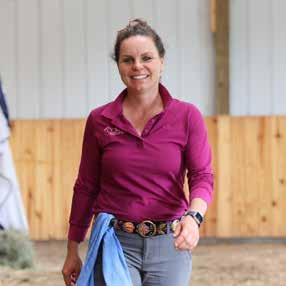
MEMBER OF EACH HORSE’S CARE TEAM, WORKING ALONG WITH THEIR OWNER OR TRAINER, ATTENDING VETERINARIAN AND OTHERS TO PROVIDE AN IDEA OF HOW A HORSE USES ITSELF THROUGHOUT ITS BODY AS WELL AS IDENTIFYING ANY ASYMMETRY, WEAKNESS OR LOSS OF RANGE OF MOTION.

CARROLL’S PRACTICE ALSO OFFERS ELECTRO-ACUPUNCTURE, WHICH APPLIES ELECTRICAL CURRENTS TO ACUPPOINTS, MUSCLES AND SOFT TISSUES TO RELIEVE MUSCLE SPASMS AND PAIN WHILE INCREASING CIRCULATION IN THE AREA.
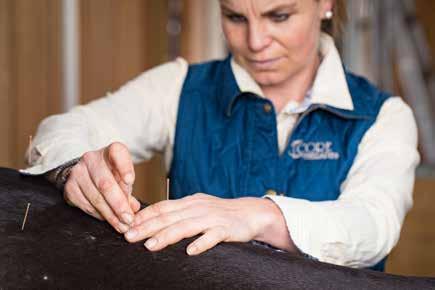
In addition to her chiropractic work and other offerings, CORE Therapies recently began providing layup, rehabilitation and refreshing services at Carroll’s AppleRidge Farm in Central Kentucky, which also serves as her practice’s base of operations. The farm includes two barns (one smaller barn for her and her daughter’s personal horses and training/resale projects and a 12-stall shedrow-style barn for her layup and rehabilitation clients), several round pens and small paddocks for individual turnout, an EquiGym and a TheraPlate, with an underwater treadmill coming soon.
WHAT IS CHIROPRACTIC?
The American Association of Equine Practitioners defines chiropractic as: a form of manual therapy that uses controlled forces applied to specific joints or anatomic areas to cause a healing response.
In its most basic sense, chiropractic helps to restore the range of motion in joints and stimulate neurologic reflexes, which in turn can reduce pain and inflammation, promote a more symmetrical gait and allow for an increase in muscle tone.
“There, we can handle everything from post-surgical care and injury rehabilitation to giving racehorses a break to refresh from the track,” Carroll said. “A fit racehorse is a different animal than most other types of horses. They’re young, fresh and at the peak of fitness. When managing their recovery from an injury or just giving them time off, it is critical to know how to keep them safe and cater to both their physical and mental well-being.”
A Day In The Life
While Carroll has galloped in the mornings before starting her traditional workday throughout her professional career, this year she decided to forgo racetrack riding to focus solely on her practice.
“I used to start my day at 4 a.m. to get on a handful of horses before starting my rounds, but now we are working with such a volume of horses—I worked on 50 today, which is a typical day—that I needed to step away from that,” Carroll said in mid-May. “So, I now sleep in until 5:30 and get on my Peloton before work. While I ride a few of my training horses after work each day, I really miss riding at the track.”
After getting ready and helping with morning chores around her farm as needed, Carroll heads to the rehabilitation barn to check in with her barn manager and go over the schedule and treatment list for that group of horses.
By 7 a.m., Carroll is on the road, and after meeting up with her assistant, Chelsea Humphrey, the pair heads to their first appointment. They go nearly nonstop from one client to the next until 5 p.m. or later.
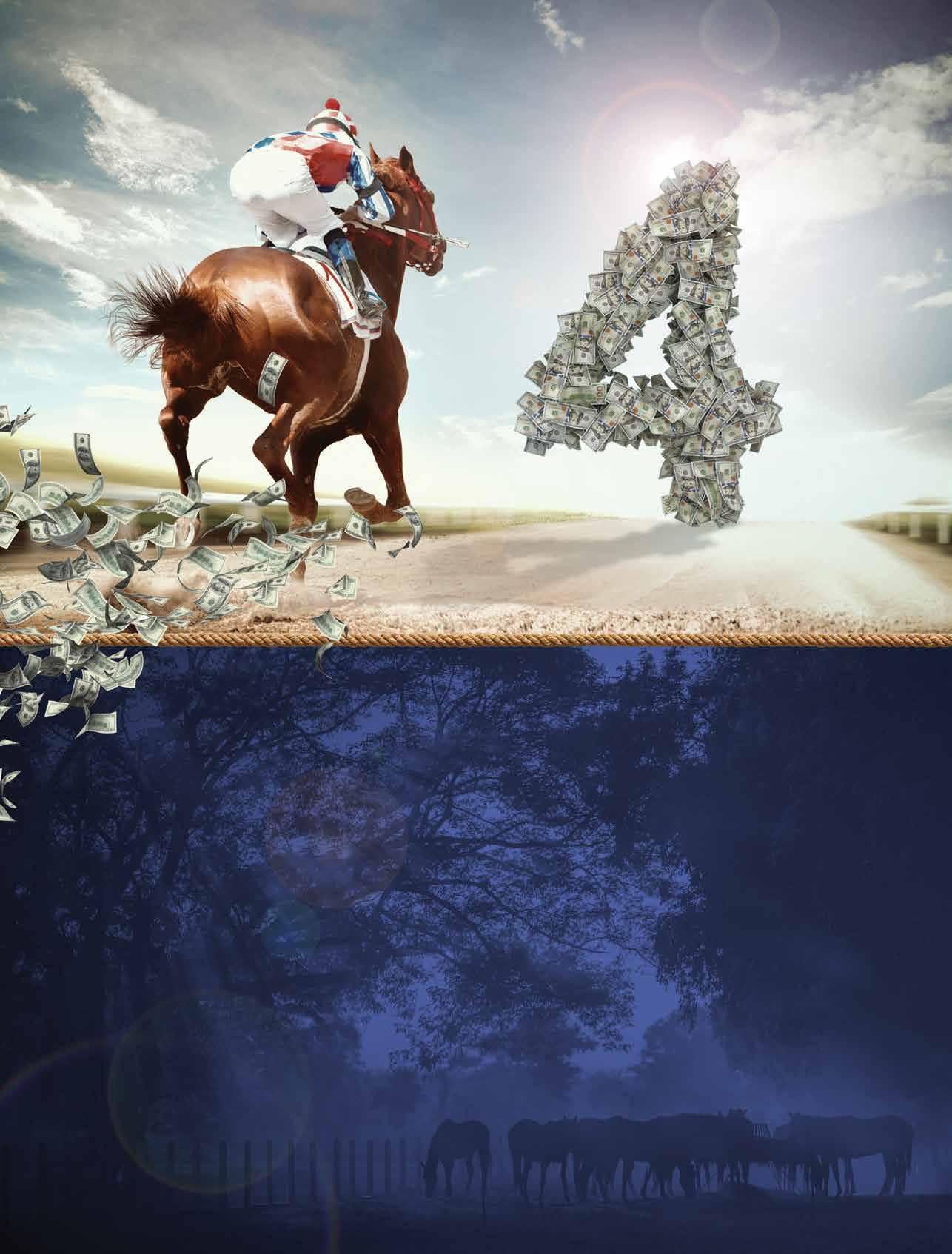

“Having an assistant who I can dictate findings to during each appointment and who can then log them in our system for both client reports and billing as I drive to the next location is key,” Carroll said.
With clients throughout Central Kentucky and also in Louisville, Carroll organizes her week by regions.
“On Mondays, I work in and around Versailles and Woodford County and also at Keeneland,” she said. “On Tuesdays, I am in Louisville, both at the track and area farms and training centers. On Wednesdays, I go to the Thoroughbred Training Center and my clients in and around Paris, and on Thursdays, it is back to the other side of town, doing Keeneland again, as well as more farms in Versailles and Midway. I alternate every other Friday working in the Harrodsburg and Danville area one week and offering haul-in appointments at my farm the other week for those who are outside of my coverage area.”
Once her appointments are done for the day, Carroll heads back to the farm, checking in once again with her barn manager before riding her personal horses and retraining projects with Aurea.
When the two are done riding and have had dinner, Carroll heads back out to the rehabilitation barn to do evening treatments and night check before heading to bed and doing it all again the following day.
Carroll said when she started CORE Therapies, her practice was roughly 80 percent racetrack clients, with the other 20 percent made up of a mix of sport horse and Thoroughbred sales clients. Today, she says that ratio has nearly flipped.

“The sales consignors and farms in and around Central Kentucky have really latched on to the idea of utilizing chiropractic work as a preventative for not only their yearlings but foals and weanlings as they develop and even their mares,” she said. “They see the cost-benefit ratio. From a business standpoint, the more racetrack work I do, the more I feel compelled to travel. Most go south for the winter, and I used to keep up the licensure and do a lot of traveling in the past, but it’s expensive and takes me away from my daughter, the farm and my other clientele.”
CARROLL’S CORE THERAPIES OFFERS LAYUP, REHAB AND REFRESHING SERVICES AT HER APPLERIDGE FARM IN CENTRAL KENTUCKY, WHICH SERVES AS HER BASE OF OPERATIONS AND FEATURES SEVERAL ROUND PENS AND SMALL PADDOCKS, AN EQUIGYM, A THERAPLATE AND SOON AN UNDERWATER TREADMILL.
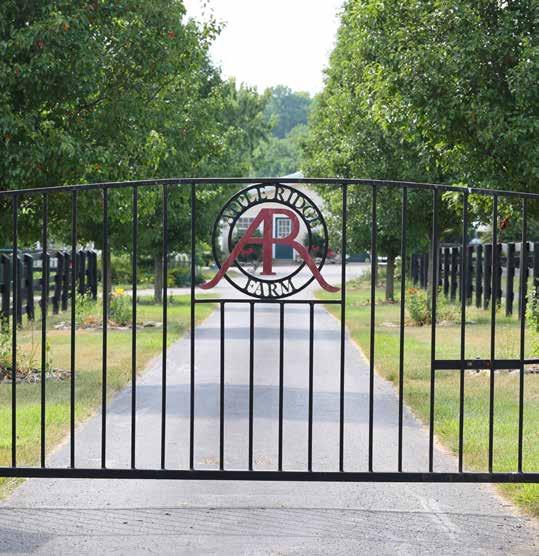
Carroll still travels some for her clients, but she has streamlined her approach, leaving after her last appointment on Friday and returning Sunday evening.
“I’ve learned to do it in two days, catching the last flight out on Friday, working like hell on Saturday and Sunday and then catching the last flight back to Lexington Sunday night,” Carroll said. “That way it doesn’t take me away from my weekday schedule, my farm or my daughter more than it has to.”
Listening To The Horse
Carroll’s work as veterinary chiropractor places her in a unique role. In the same way that she first explored chiropractic and acupuncture to gain more tools in her toolbox as a practitioner, she sees herself as a member of each horse’s care team, working with their owner or trainer, attending veterinarian and others to offer a clear picture of how a horse is using itself throughout its body, as well as any asymmetry, weakness or loss of range of motion.
“Often if a horse has a physical issue, it creates other secondary issues, which can often muddy a clear diagnosis,” Carroll said. ‘Maybe they’re stiff or locked up in their lower neck or sacroiliac joint because they’re trying to get off of a lower limb issue. If I adjust a horse before its lameness workup, their attending veterinarian is often better able to identify the primary problem.”
Being an initial skeptic herself about the approach that has become her life’s work, Carroll does not take umbrage to naysayers. Often, she says, it is not that such people have had a negative experience with it but rather no experience.
“When vets or other professionals hear terms like a horse having a rib out, it’s a terminology issue,” Carroll said. “The rib is not displaced but rather is not using its full range of motion. That is the basis of chiropractic—to support and/ or restore range of motion. People don’t know what they don’t know, and I was the same way. It’s funny that once I did a deep dive to educate myself about this approach, I ended up dedicating my life to it.” HJ


